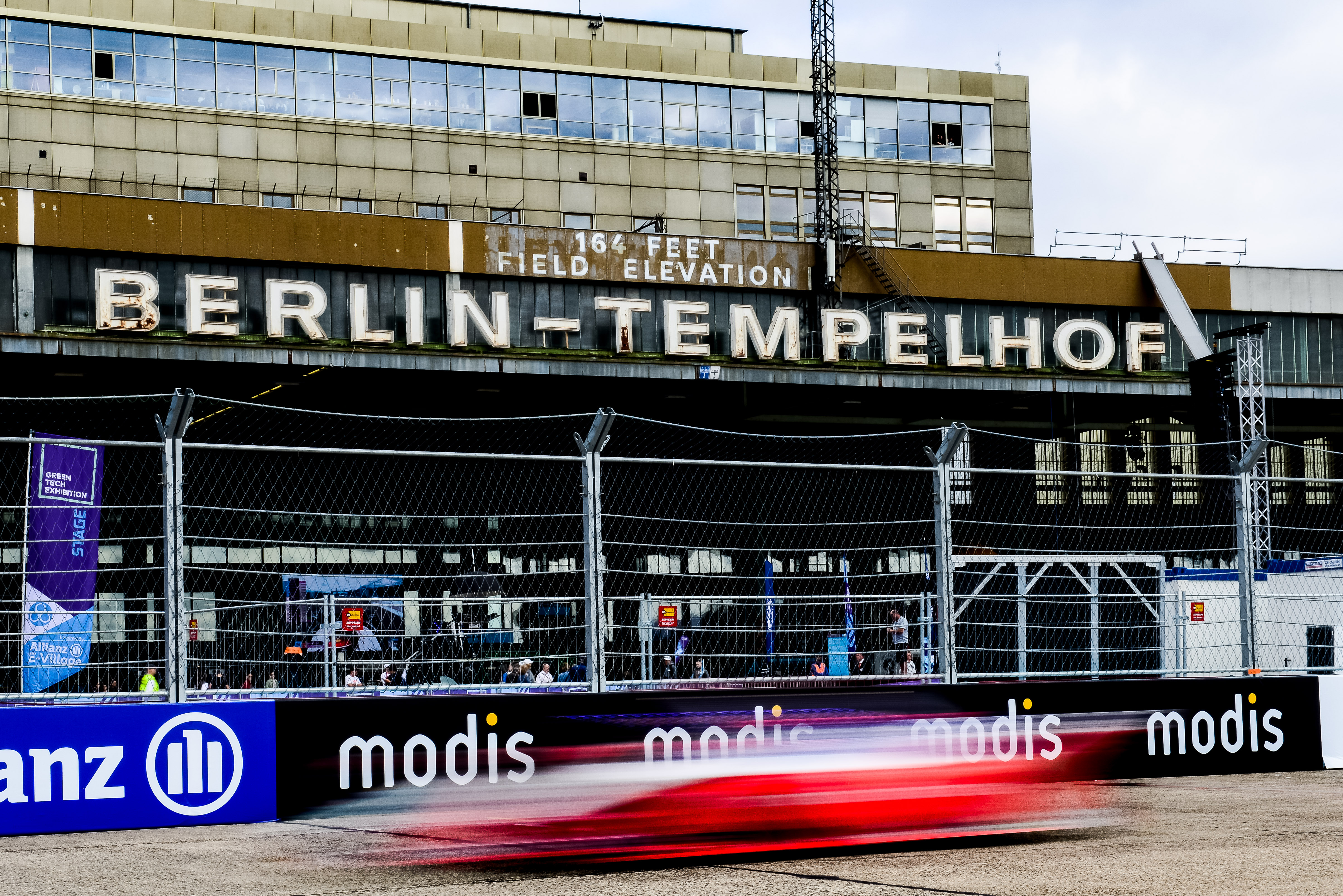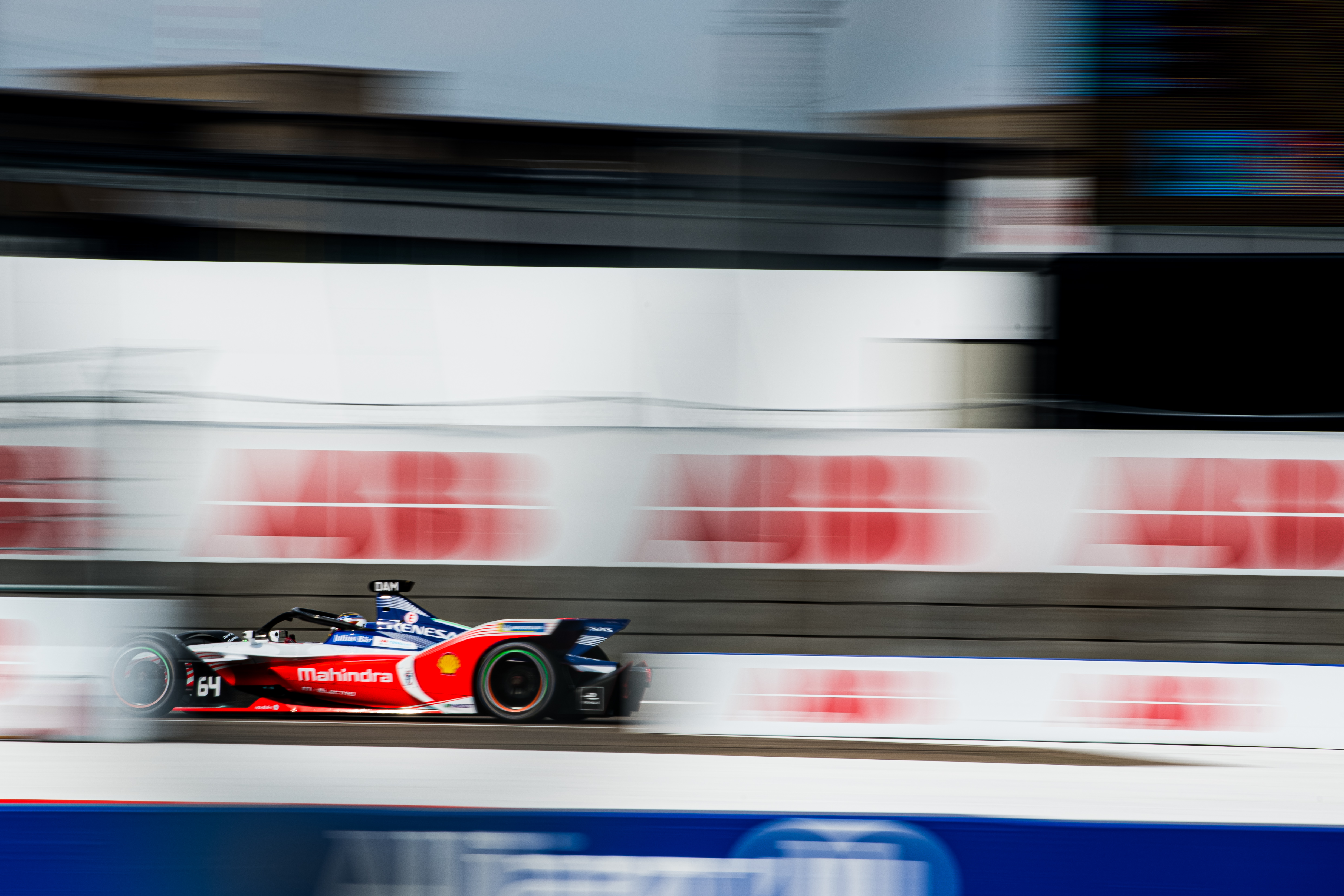Next month’s Berlin Tempelhof Formula E residency will test teams like never before as they tackle six races in nine days on three distinct tracks at the famous airfield.
Teams will need to have planned to forensic detail in order to ensure that everything runs like clockwork – start on the back foot and all six races will be compromised.
Offloading as much performance engineering to the factory HQ and Driver-In-The-Loop (DiL) simulator so that the trackside engineering team can concentrate on keeping on top of operations will be key.
Tempelhof is already a high-grip track. With hotter temperatures likely it should have a more grippy surface in early and mid-August as opposed to the May and June races that have gone before.
It will mean that energy recovery will be harsh and raised battery temperatures will escalate as they did in Santiago last January.
The Race’s technical consultant Peter McCool, who helped engineer present championship leader Antonio Felix da Costa at the first Tempelhof race in May 2015, believes that the unique surface will play s a larger part in proceedings this season.

“The track is very different from all other tracks because it is made from cast concrete squares designed to slow planes down, so it is exceedingly high grip,” says McCool.
“The air temperature is normally at least five-degrees Celsius warmer and this should result in a significantly hotter track temperature.
“With a much hotter track and more grip the traditional ‘lift & coast’ and corner brake points should be different.
“All lap sims will have to be revised, and optimised, knowing that grip levels will be increased and drivers can brake later and harder, knowing they can recover energy at a higher rate without breaking grip.”
A track has never been run in a reverse direction at an FIA international sanctioned single-seater event before.
Formula E has announced that a reverse version of its Berlin track will be used for the first leg of its season finale races, as predicted by The Race
Take a look at what Berlin looks like in reverse here, with commentary from ex-FE racer @MaroEngel and a lap by sim ace @JvdH_96 pic.twitter.com/nYp4EGBnlK
— The Race (@wearetherace) July 21, 2020
Most tracks have gone to great lengths to optimise the run-off areas and they are obviously always optimised to one specific direction of travel.
From an engineering perspective, it should make little difference. In essence, running a reversed track should not cause any significant issues and just needs to be approached as another new circuit. McCool thinks that most issues will come from operational issues.
“My focus for this series of races in Berlin would be on team operations definitely,” he says.

“There is a lot to lose if you get the operations wrong when there are so many races so close together.
“In a normal Formula E weekend, you want and need everything to go as smoothly and as close to your plan as possible. If you have to make a battery change, for example on a Friday, then your entire weekend is compromised as your whole programme gets shifted back.
“You don’t get to make the set-up changes you wanted to run or to complete the ‘lift & coast’ tests you wanted to complete prior to the race. The result is that you go into the race slightly underprepared – and in Formula E that is magnified hugely.
“Simple preparatory exercises such as making sure the team is in good shape and well hydrated, fed and get enough sleep are crucial. Plenty of teams and as a result drivers have fallen foul of such basic housekeeping before.
“These things may sound obvious – but it is going to be a really important part of the approach over such a concentrated period of racing in such hot conditions, especially on a massive stretch of concrete which reflects the heat massively.
“I would make sure that the sporting director, technical director/race engineers know every corner of the track, the pitlane, pitlane entry and exit points, where the stewards office is, where the FIA legality box is, etc.
“I would prioritise this over trackside lap sims – which I would do ‘offsite’ back in the factory or with extra staff back in the hotel.”
The Race has learned that some teams are expecting to take extra staff above and beyond their 21 pass allocation (there is now one extra pass available for team principal usage).
This could mean teams adopt a system of rotating ‘squad members’ for the double-headers but the use of the hotel as an extra remote facility is forbidden.

All teams bar Porsche and Audi are in the same hotel for the duration of the nine-day race window and all bar Audi, Virgin Racing and NIO333 will have reserve drivers on-site. Nissan e.dams is undecided whether it will take a reserve driver to Berlin.
The reserve drivers on-site in Berlin will be Nick Heidfeld (Mahindra), Daniel Juncadella (Mercedes), James Rossiter (DS Techeetah), Ho-Pin Tung (Jaguar), Norman Nato (Venturi), Joel Eriksson (Dragon), Simona de Silvestro (Porsche) and Lucas Auer (BMW).
Teams will also have other drivers at the DiL, working with remote operatives throughout the nine-day duration.
“Using your factory-based DiL simulator and engineering team to lead and validate your lap sim and energy management strategy would be the best use of resources over the race week,” says McCool.
“Anything you can do to take workload off the track based engineering team will pay dividends in terms of smooth car operations.”
The teams will also need to make sure they have more than enough dry-ice for the six races!
“With hot ambient, hot track and high demands on energy recovery teams will have to watch and manage battery temperature even more than usual,” states McCool.
“Battery temps could be one of the critical issues as we have seen at Santiago and Mexico in the past.”






